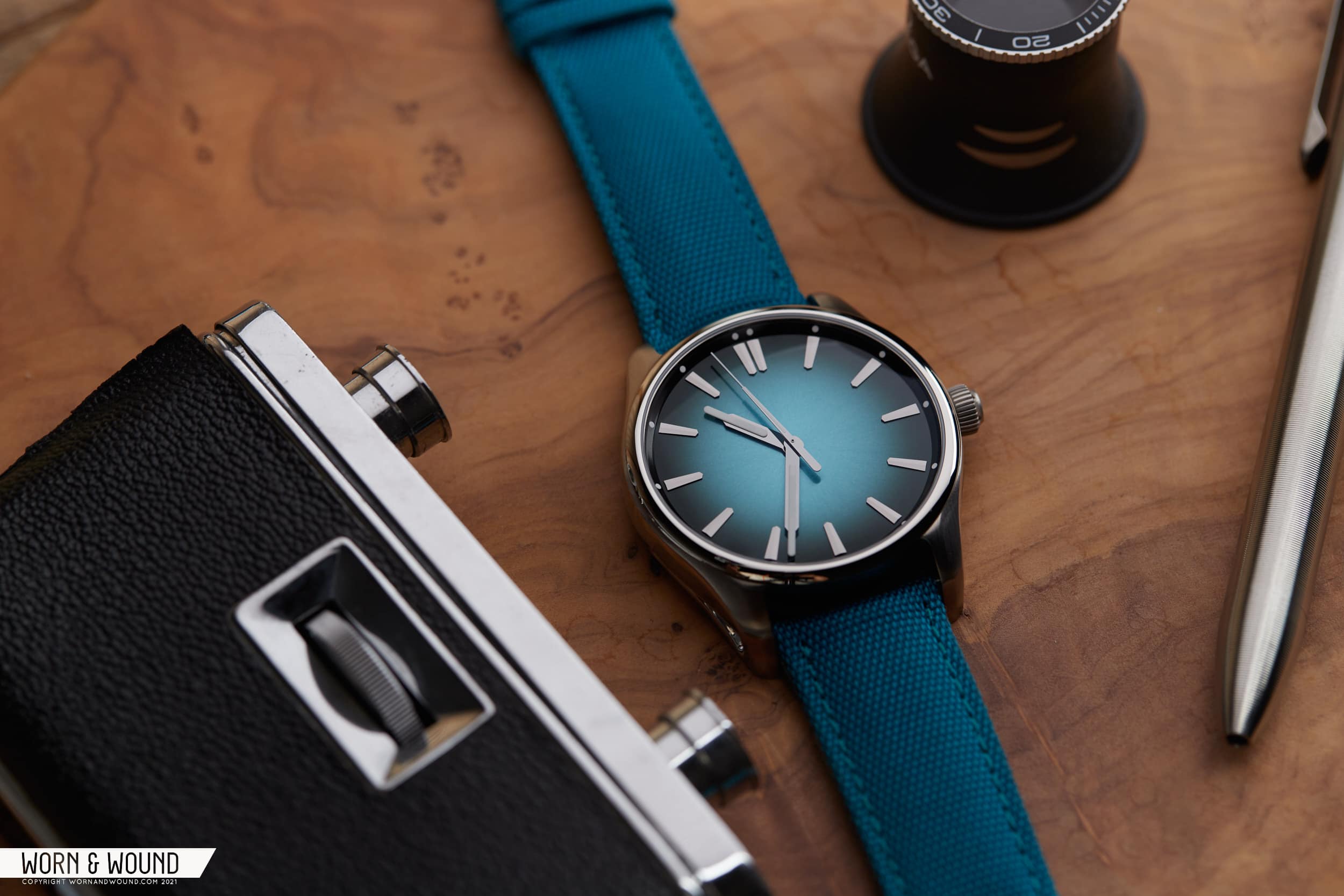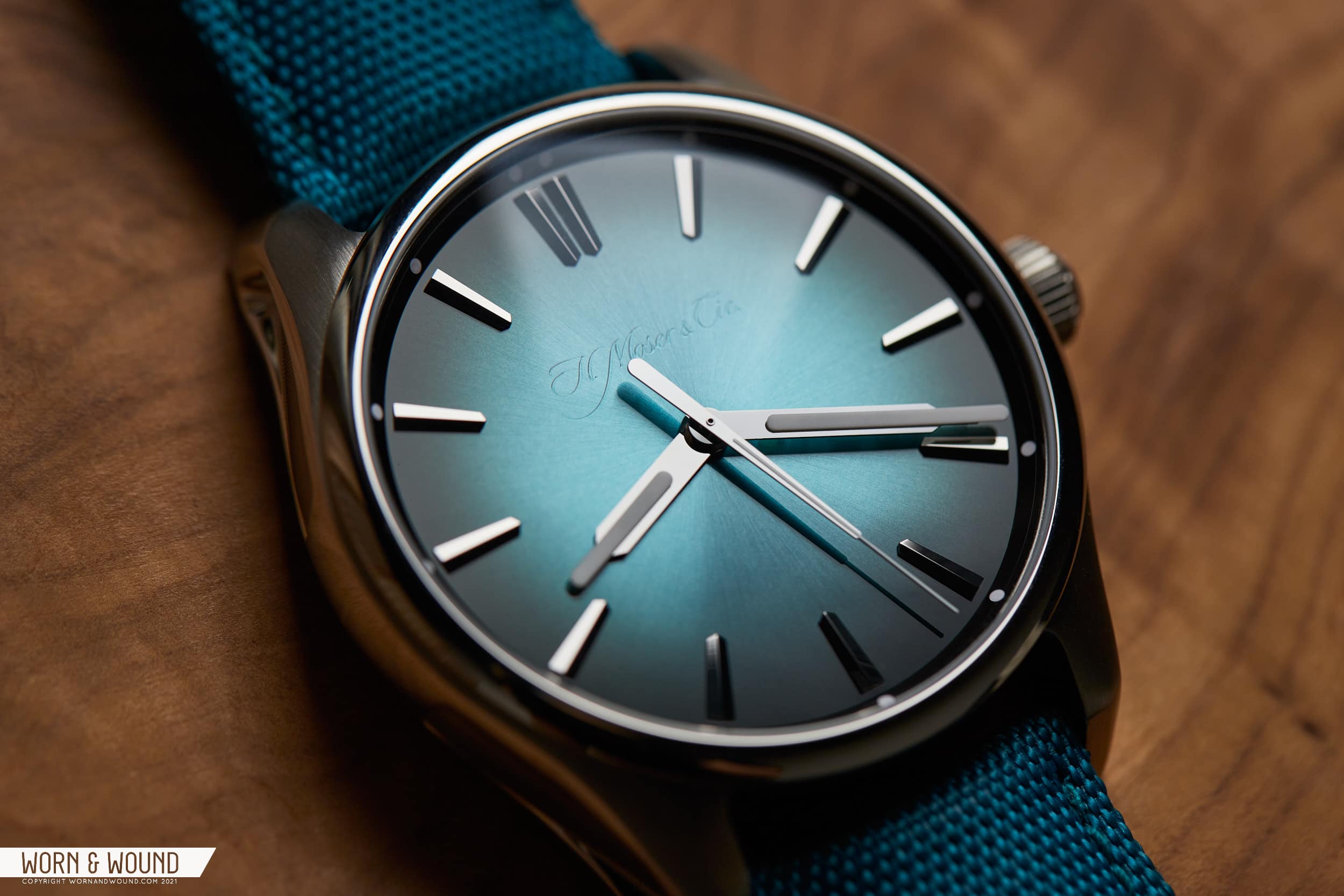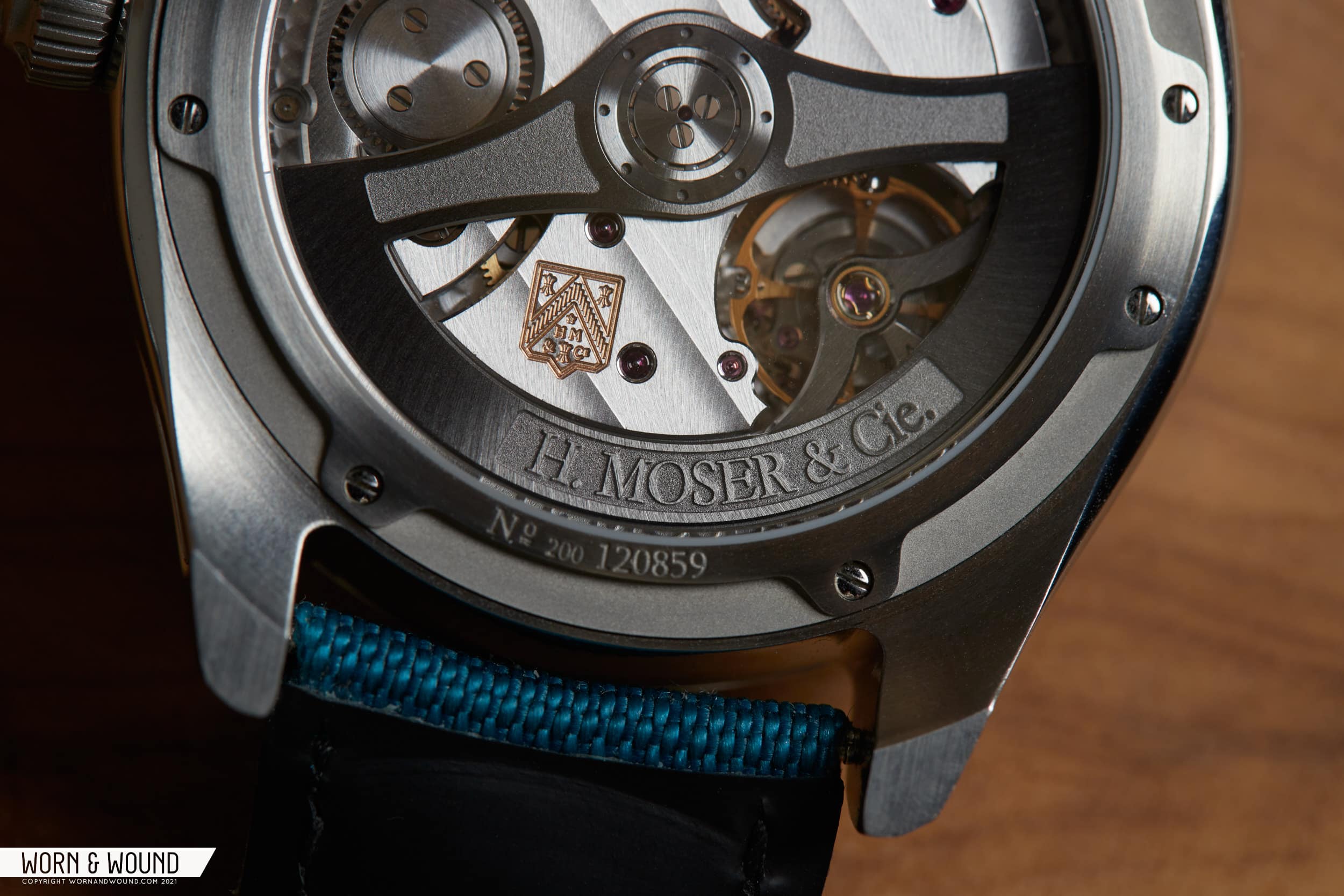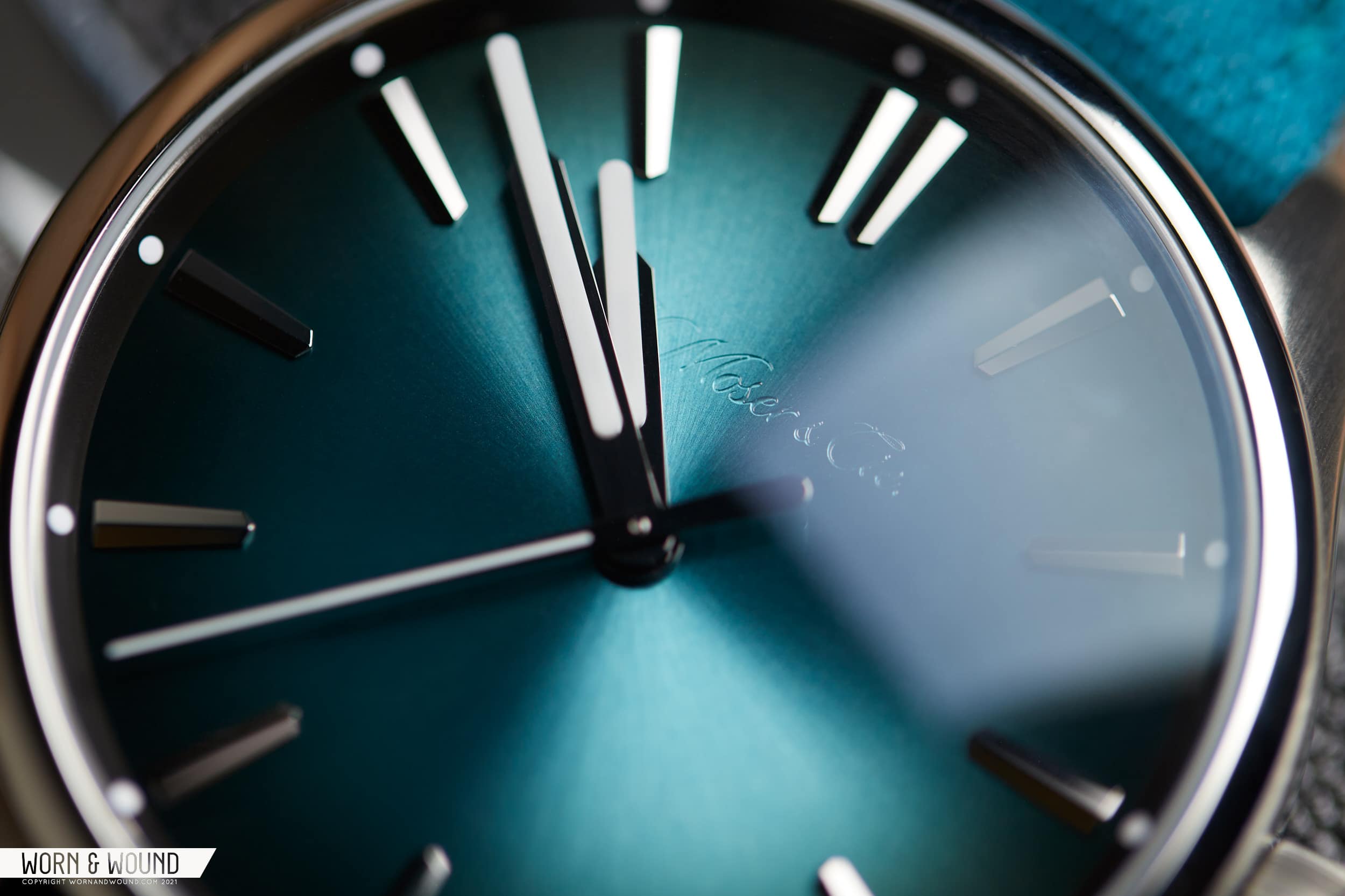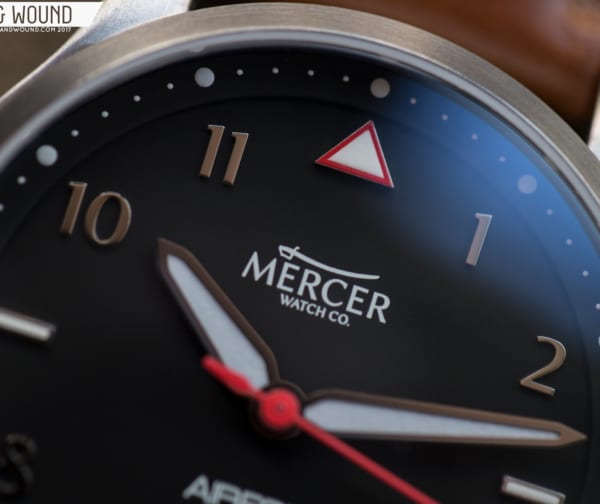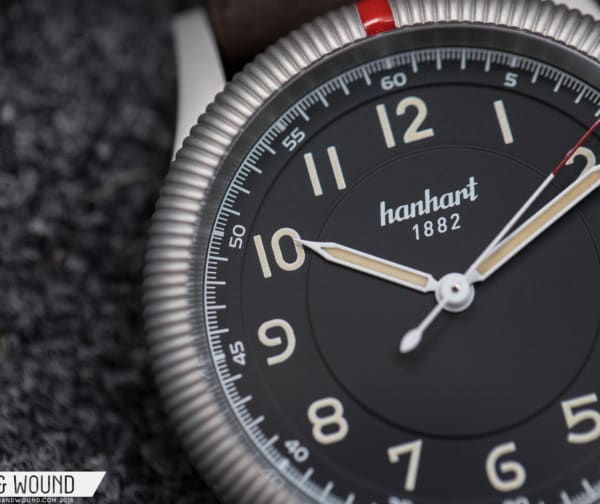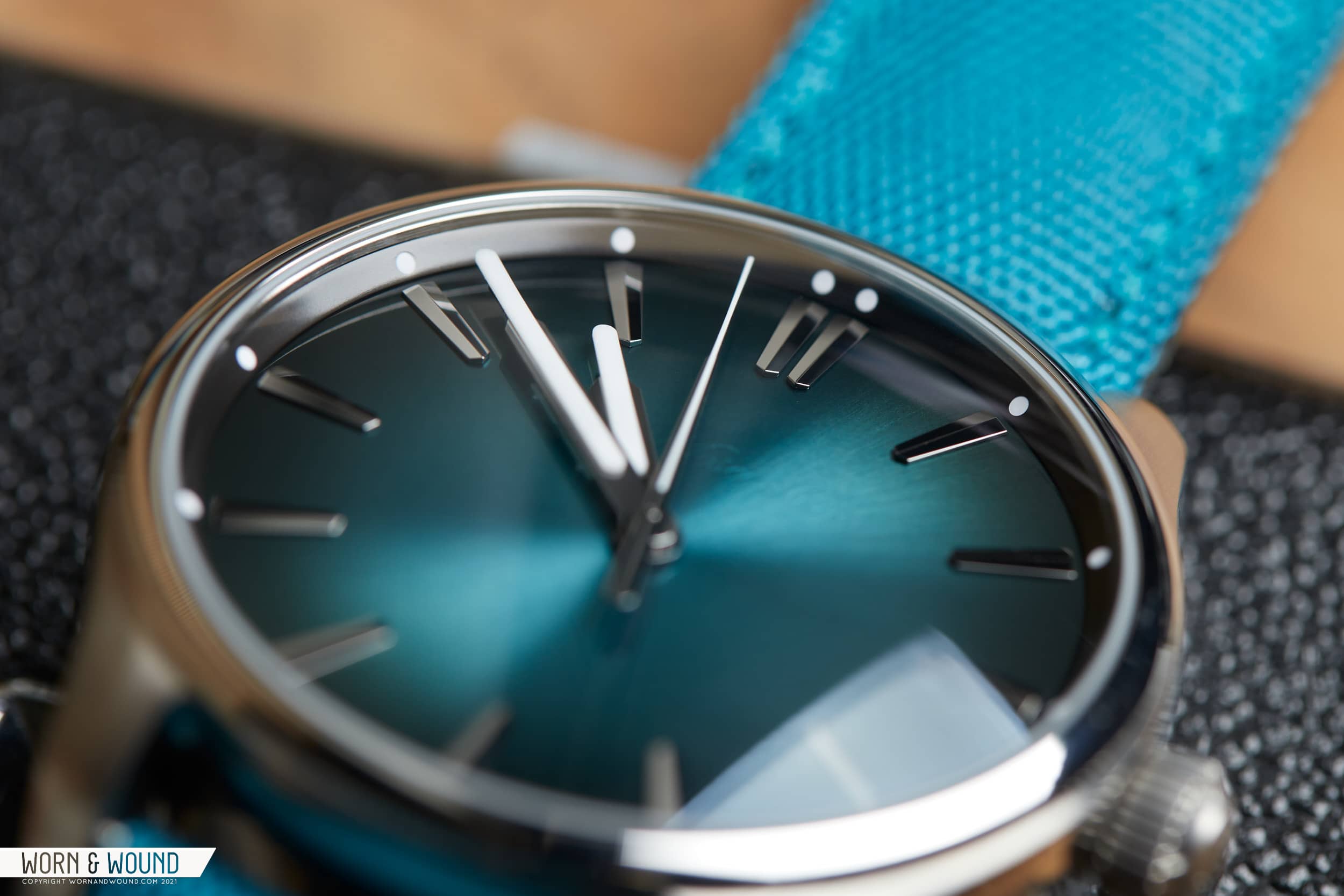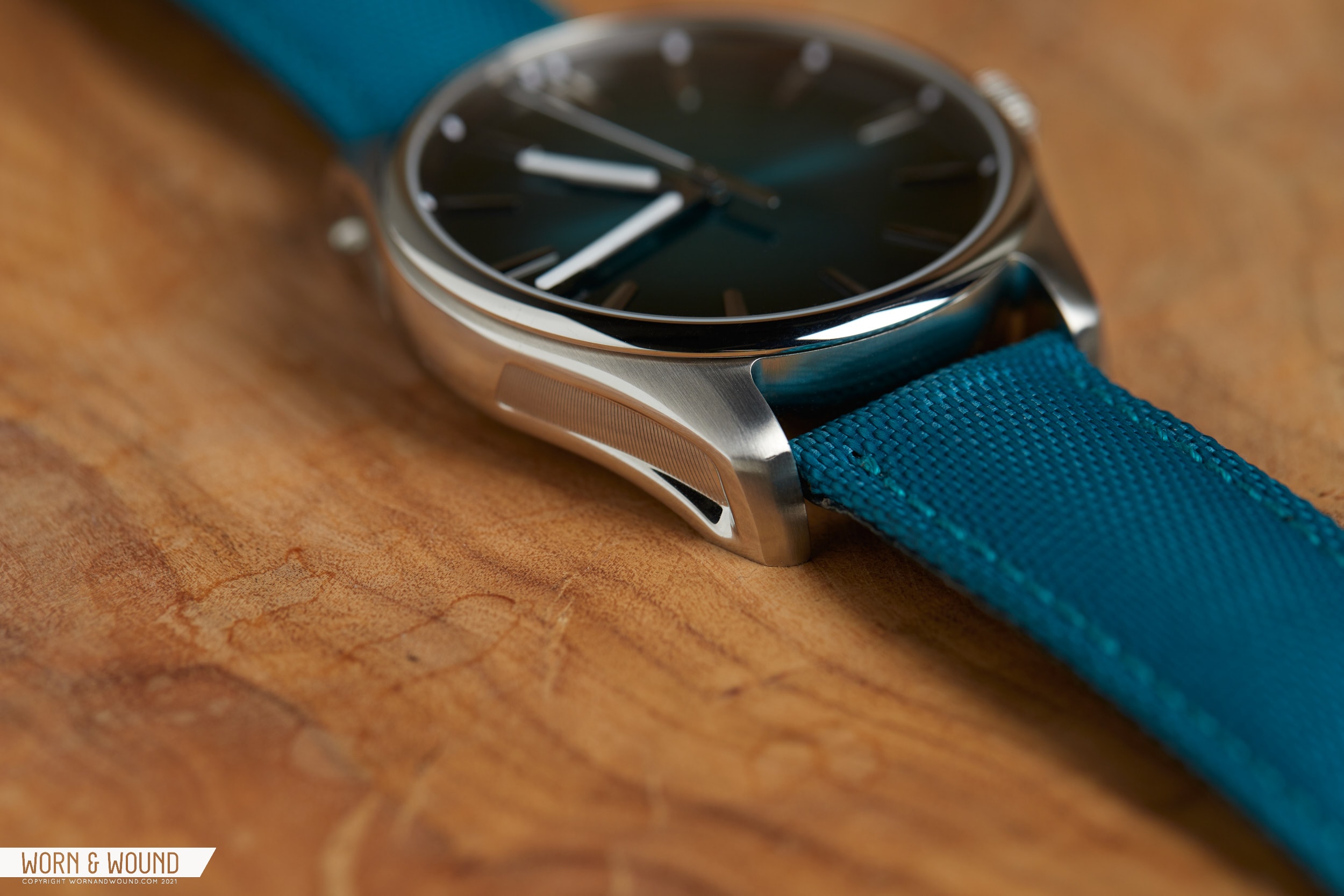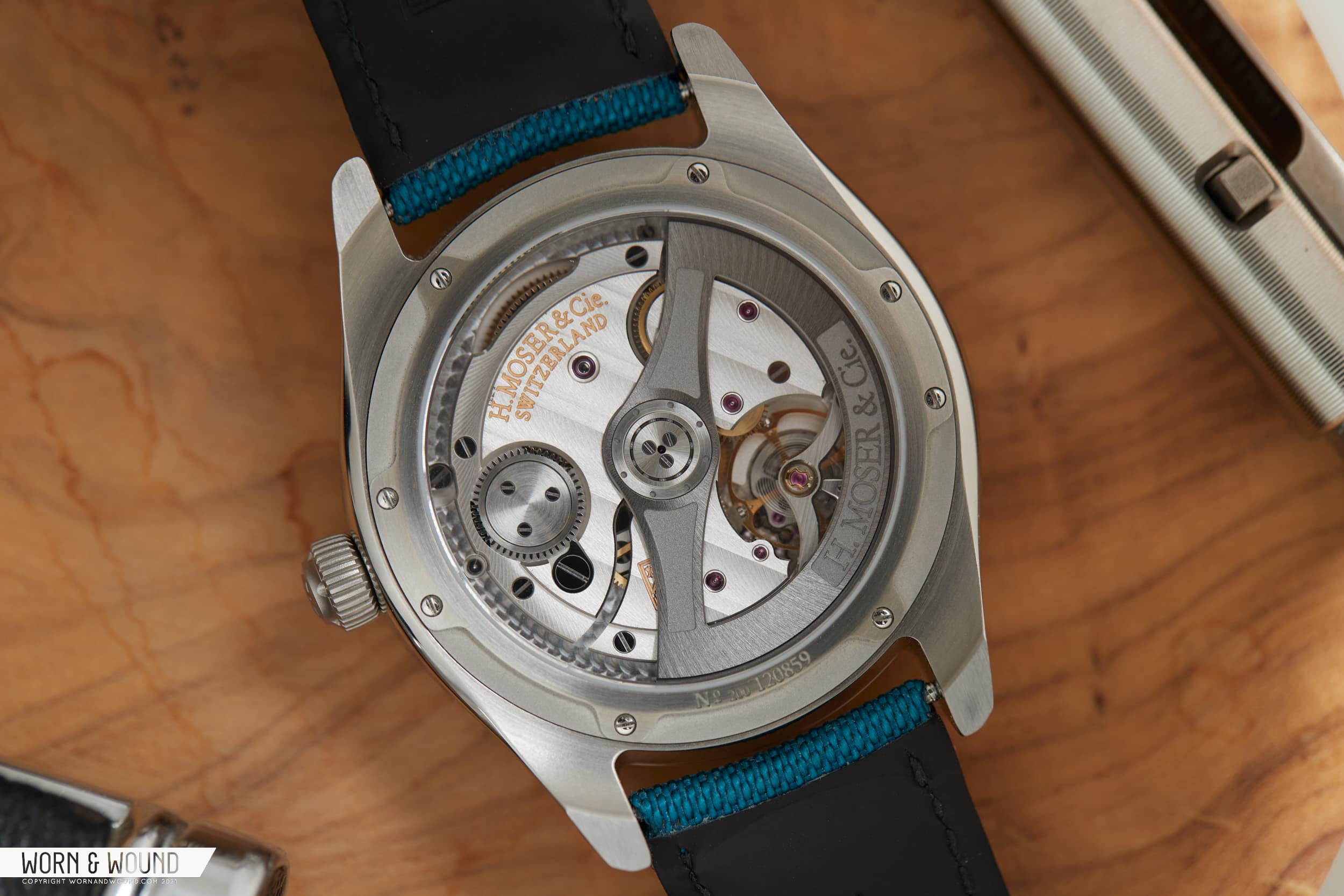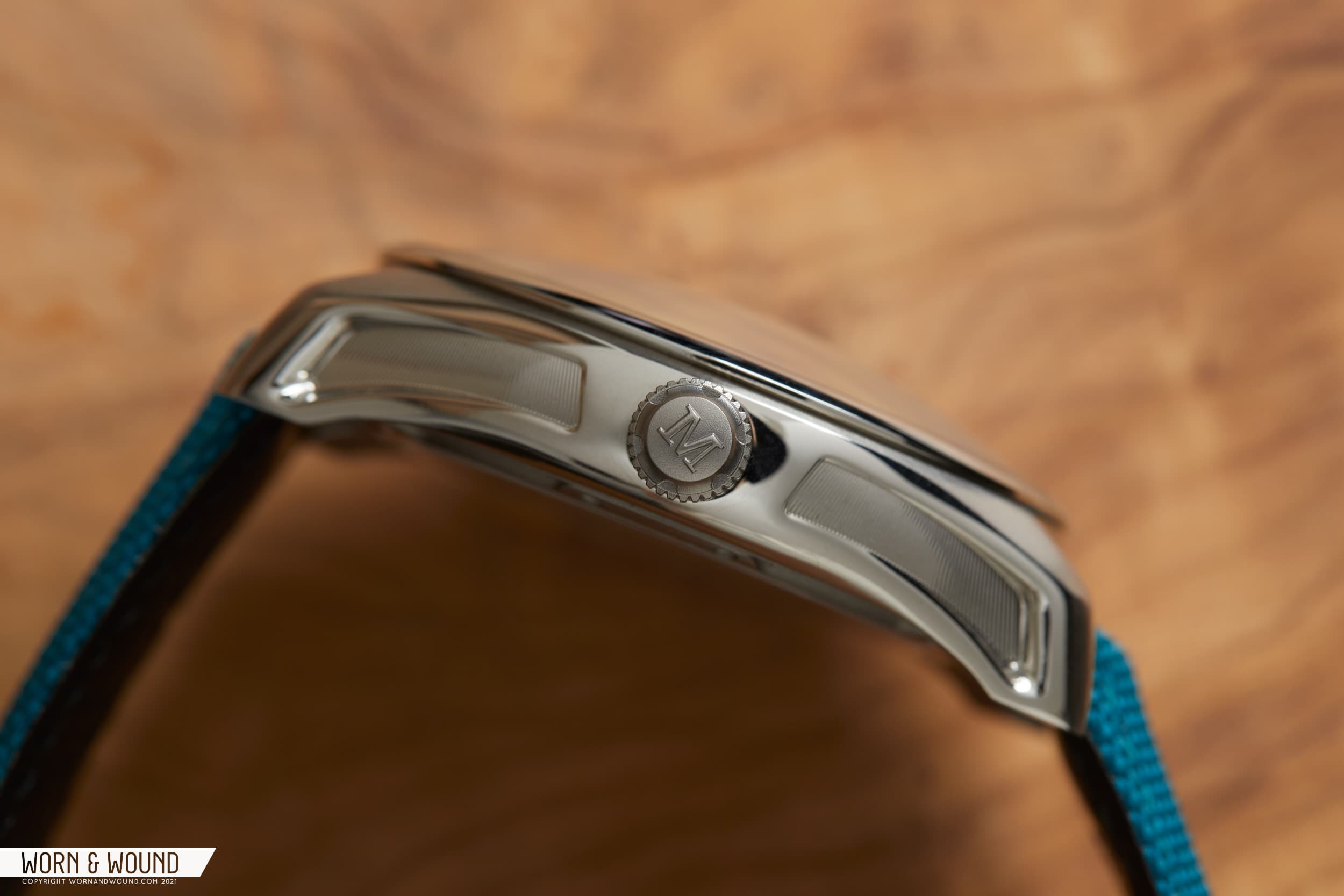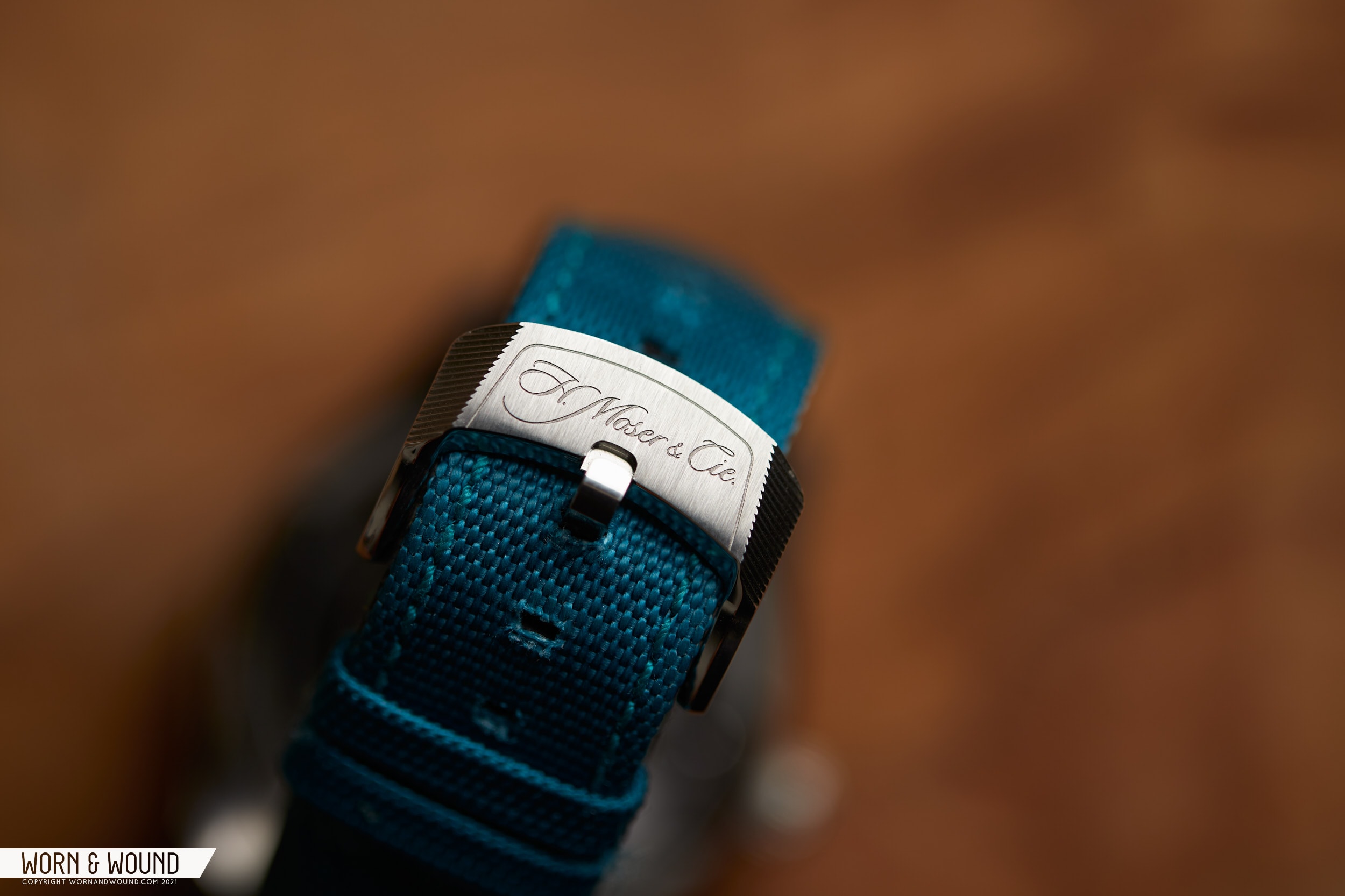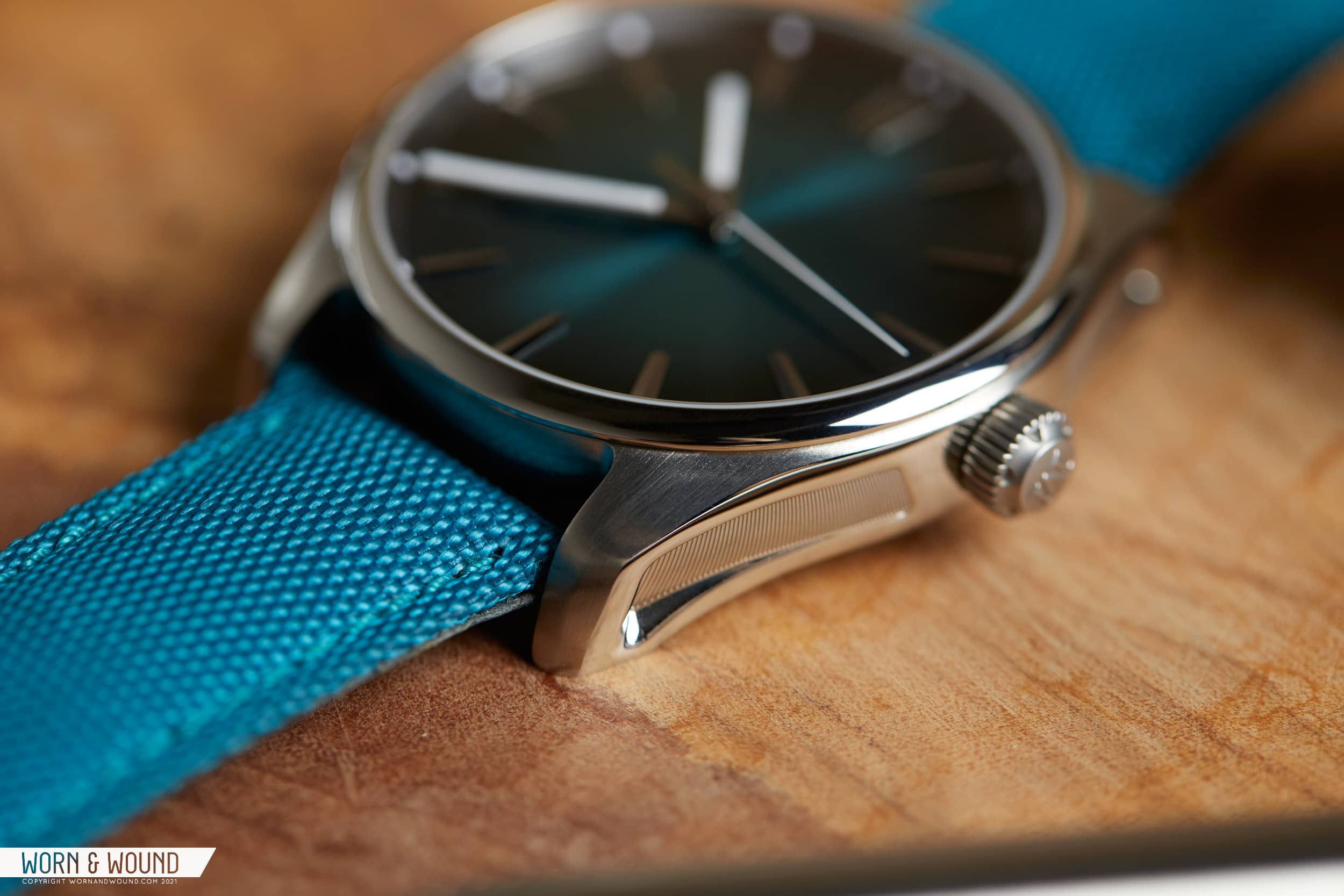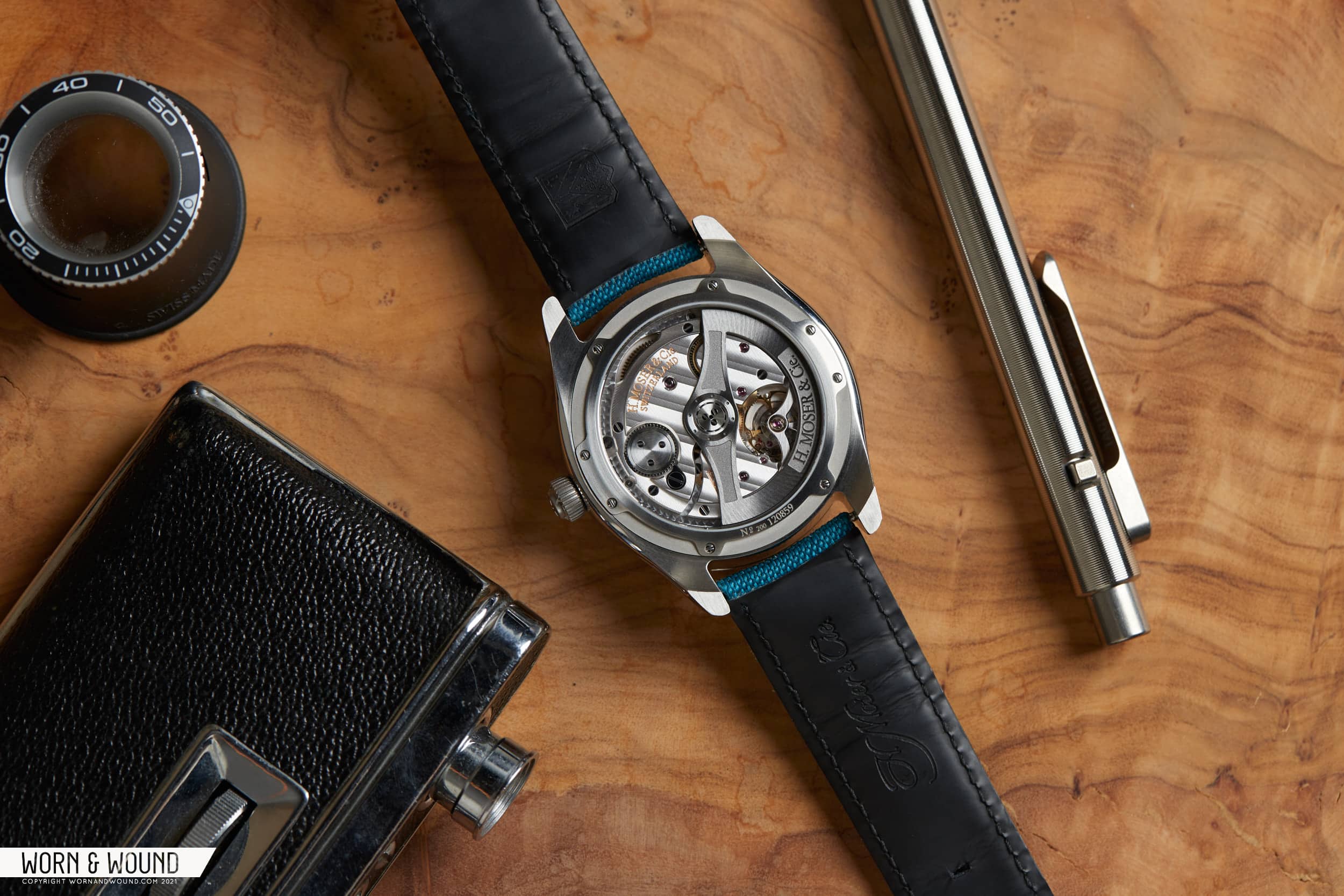Anyway, it’s a long movie, and while I was enjoying myself, I still felt the need to check the time, as one does at these things. Even without the hands and small lume plots on the dial being charged, I found that I was always able to clearly see the time in the dark theater thanks to the reflective nature of the dial elements and the sheer size of the crisp white lume strips on the hands. The movie itself also crystallized this watch’s aesthetic for me. Eternals is straight up acid trip science fiction, with characters that are seemingly immortal who report to God-like figures the size of actual planets. Our heroes, when thrust into action, are clad in colorful suits, and the Mega Cool would have absolutely looked appropriate on any one of them. The movie somehow made me think of this watch in a psychedelic, science-fiction context that I hadn’t previously considered, and while it’s not my personal style, it was somehow the first time the watch really made sense to me. A watch fit to properly complement Jack Kirby’s art gets a point in my book.
Conclusions
The Mega Cool, like all watches to a certain extent, is a study in contrasts. There are parts that work really well (the dial is genuinely impressive) and parts that left me scratching my head (the case, clearly, and the use case outside of a Marvel movie). This isn’t a watch that I’d choose for myself, but I can see the appeal if your taste runs toward the more dramatic. Whether you want it to or not, the Mega Cool makes a statement. That statement will be different depending on whether the watch is seen by your dental hygienist, the kid selling you popcorn at the cineplex, or a seasoned collector at your local meetup, but it’s a tough watch to ignore.
![]()
The retail price of the Mega Cool is $15,300. Obviously, that’s a very expensive watch, but it sits near the entry point for Moser as a brand. H. Moser is frequently discussed as a gateway to the world of haute horlogerie and independent watchmaking, although it feels a little strange to think of a watch this expensive as an entry point to anything, but that’s the nature of high end luxury watchmaking. Moser, it should be pointed out, is fully engaged in making watches that, even if you don’t like them, represent the absolute vanguard of artistic, complicated, watchmaking, as can be seen in their tourbillons, for example, and their use of vantablack dials. They’ve also proven to be an able collaborator, working with MB&F on a recent pair of limited editions. If you follow the independent watchmaking scene at all, you’ll hear people (fans of the Moser brand, mostly) talk about the brand’s increasingly high profile status. It’s not uncommon to hear people claim they sit where a brand like F.P. Journe did not so long ago.
In any case, at $15,000, you have a lot of options if you’re determined to spend that much on a watch, and like any other watch at any other price point, you can point to examples that make the Pioneer seem like it’s either a screaming value, or insanely overpriced. If they’re the next Journe, well, that’s a pretty obvious value proposition. But if all you really care about is having a big, colorful watch on your wrist, there are a myriad of options, even G-Shock might have you covered. At the end of the day, however, dipping your toe into this style of watchmaking with a great in-house movement and a brand with a certain pedigree at $15,000 doesn’t seem like the craziest idea in the world if you have an interest in this stuff and the disposable cash. I’ve said it a thousand times, but check the prices on grey market Daytonas compared to this, and tell me where you’d rather have your money. Better yet, look at the Aquanaut, which is a watch made in a similar ultra-casual-but-luxe-and-sporty style. One is literally unobtainable, and seems destined to hit six figures, and the other currently sells for less than retail on the secondary market.
That brings us back to some of the noise around Moser as a brand. I’m quite confident they’ll continue to do exactly what they’ve been doing for the last few years and release watches that push people’s buttons. This watch, as a watch, either works or doesn’t work according to your own taste profile, what you like and what you don’t. The brand, however, is asking a question that’s interesting and in my opinion worth considering, and that’s to what extent a watch or a watchmaker should exist as commentary on the larger watch community. I’m certain there are some in our community that bristle at the idea of a watch that makes a statement about the industry, or other watches, but if you’ve ever been inclined to equate watches with art (and there are brands at all price that might cause us to do this, from MB&F to anOrdain, and countless others) I think it follows naturally that some of that art is going to be created for the purpose of commenting on the state of the world the art was made in. The watch industry, at this particular moment, is certainly fertile ground for commentary. We accept this in film, music, fine art, literature, and every other medium you can name, and I don’t think watches should be excluded.
But enjoying (or not enjoying) a watch made by H. Moser doesn’t require this type of deep analysis. It’s still an aesthetic object, and at the end of the day, that’s probably how most people will interact with it. But making a conscious effort to dig a little deeper can also be rewarding, particularly if you find yourself identifying and sympathizing with the way Moser has cast itself as a chaos agent in a world that can get pretty stuffy. While this particular watch ultimately doesn’t work on my wrist or in my life, spending some time with it in the real world certainly helped me appreciate H. Moser in a new context. H. Moser









 Featured Videos
Featured Videos




